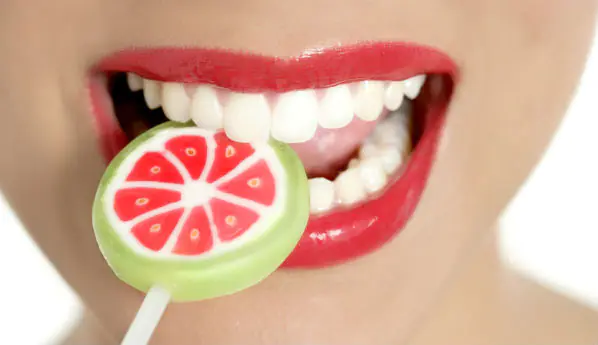Japanese researchers have created a microscopically thin film that can be coated on each tooth individually, preventing the development of caries and giving teeth a white appearance.
The described “tooth onlay” is made of a wear-resistant and extremely elastic material based on calcium hydroxyapatite, a mineral found in natural tooth enamel. Covering teeth with this material should not only protect against caries, but also protect against hyperesthesia (increased sensitivity) of teeth.
"This is the world's first flexible apatite film, which we hope will have applications in protecting teeth or repairing damaged enamel," says Shigeki Hontsu from Kinki University's Department of Biological Sciences and Technology. “Dentists could not even dream of an elastic apatite film to restore damaged areas of the tooth, but we have created artificial tooth enamel,” the scientist said.
Healthy teeth – protection from female diseases
The thickness of the film, which imitates natural enamel, is only 0.004 millimeters. It was created in a vacuum by directing a laser beam at hydroxyapatite crystals, as a result of which they dispersed into individual particles. These particles fell onto heated salt crystals, which were then picked up with filter paper and dried. This created a film that could be lifted with tweezers.
“The moment you apply the film to the tooth, it is invisible, you can only see it under light,” explained Professor Honzu. The film has pores through which liquid and air can escape so that bubbles do not form under the film on the surface of the tooth. The only problem with such coverage, according to the scientist, is that it takes the whole day.
Hydroxyapatite elastic film is currently colorless, but can be colored for use in cosmetic dentistry. Artificial tooth enamel as a coating has been tested on extracted teeth, but tests will soon begin on animals, and then on humans, and, according to Honzu, first of all, on the creators of the new material themselves.
Scientists estimate that at least five years will pass before it can be used to cover dentin - the sensitive tooth tissue under the enamel. In aesthetic dentistry, artificial enamel, which can give teeth a white color, can be used in just three years.
The technology, developed by Hontsu together with Kazushi Yoshikawa of Osaka Dental University, has been patented in Japan and South Korea, and patent applications are being prepared in the United States, Europe and China.
Source: medportal.ru



